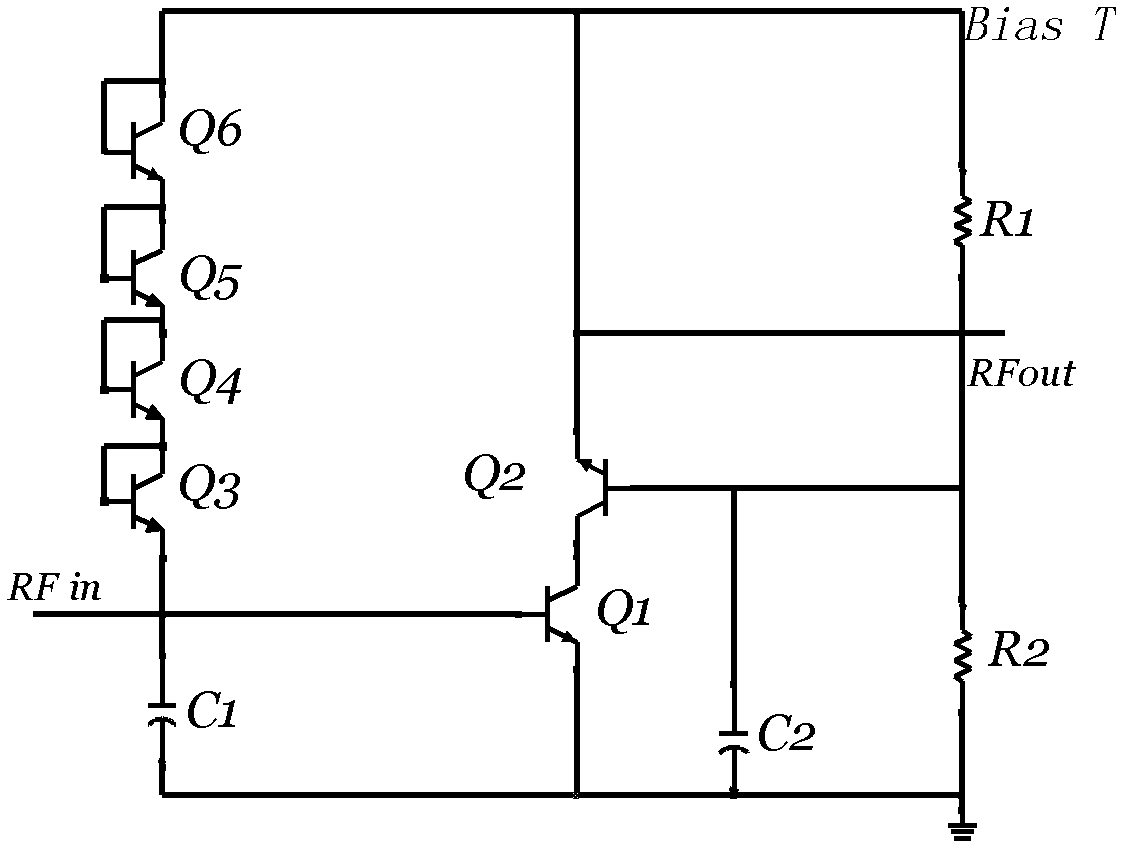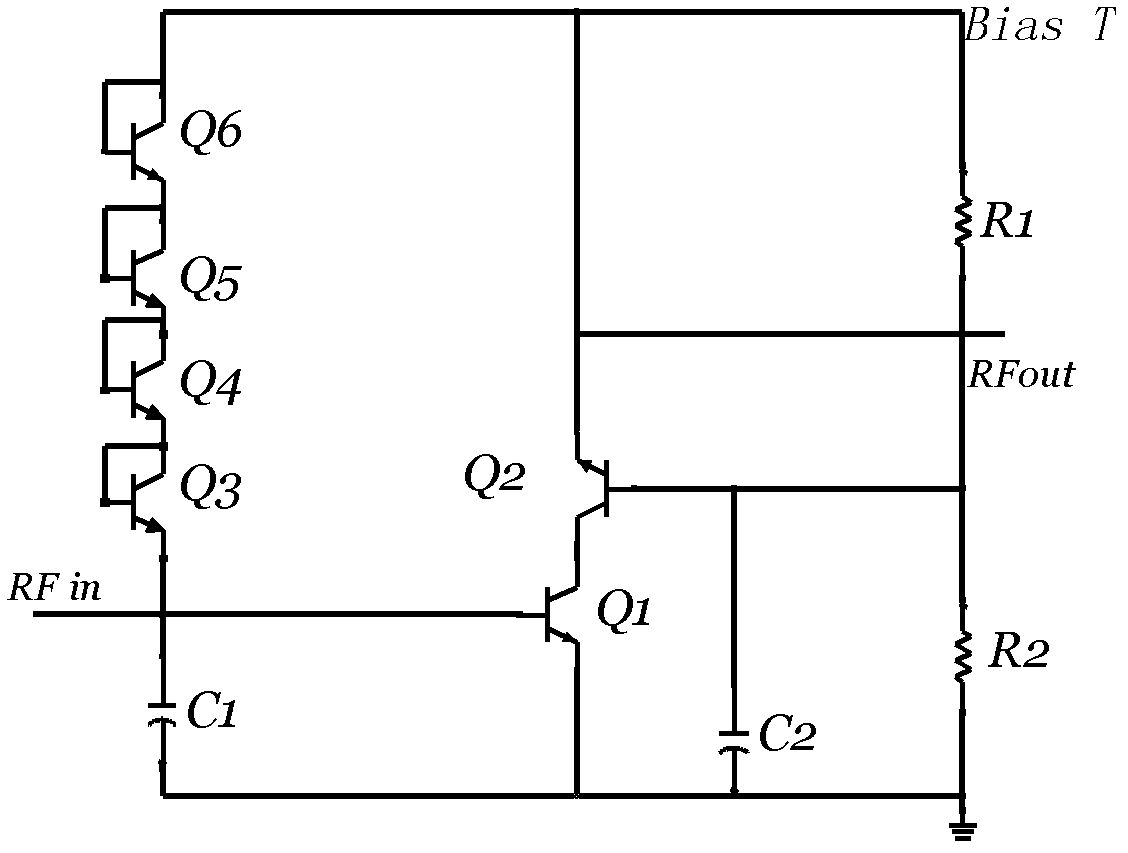Low-noise amplifier in multi-mode navigation type radiofrequency chip
A low-noise amplifier and radio frequency chip technology, applied in high-frequency amplifiers, improved amplifiers to expand bandwidth, improved amplifiers to reduce noise effects, etc., can solve problems such as multi-power, weak signal strength, and large local vibration amplitude, and achieve design Reasonable, improved anti-interference performance, low DC power consumption effect
- Summary
- Abstract
- Description
- Claims
- Application Information
AI Technical Summary
Problems solved by technology
Method used
Image
Examples
Embodiment Construction
[0011] Embodiments of the present invention are described in further detail below in conjunction with the accompanying drawings:
[0012] A low-noise amplifier in a multi-mode navigation radio frequency chip is the key component of the satellite navigation receiver. Its main function is to amplify the weak signal received by the antenna from the air, reduce noise interference, and improve the sensitivity of the received signal for The system demodulates the required information data, and its noise, linearity and matching performance directly affect the performance of the entire receiving system.
[0013] The low noise amplifier of the present invention, such as figure 1 As shown, it includes two amplifier tubes Q1, Q2 and a diode chain. The diode chain is composed of four transistors Q3, Q4, Q5, and Q6 whose bases and collectors are short-circuited. The amplifier tubes Q1 and Q2 adopt a cascode connection structure, the base of the amplifier tube Q1 is connected to the radio ...
PUM
 Login to View More
Login to View More Abstract
Description
Claims
Application Information
 Login to View More
Login to View More - R&D
- Intellectual Property
- Life Sciences
- Materials
- Tech Scout
- Unparalleled Data Quality
- Higher Quality Content
- 60% Fewer Hallucinations
Browse by: Latest US Patents, China's latest patents, Technical Efficacy Thesaurus, Application Domain, Technology Topic, Popular Technical Reports.
© 2025 PatSnap. All rights reserved.Legal|Privacy policy|Modern Slavery Act Transparency Statement|Sitemap|About US| Contact US: help@patsnap.com


